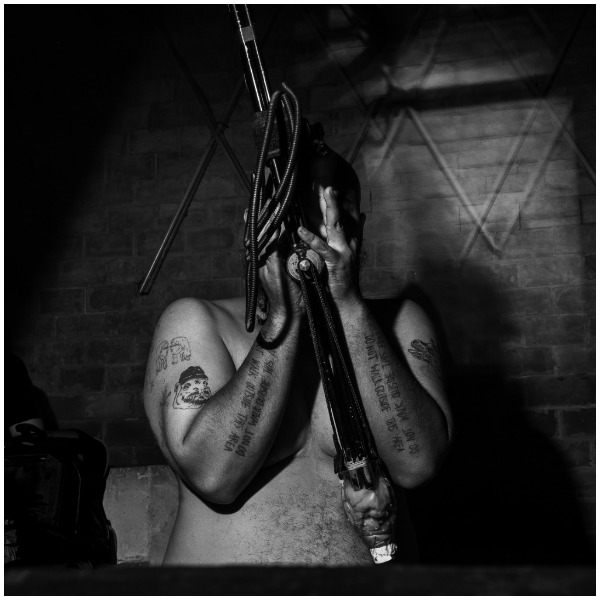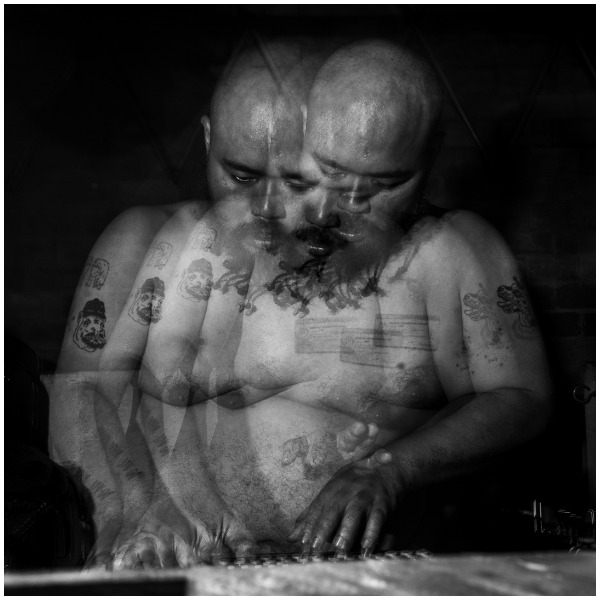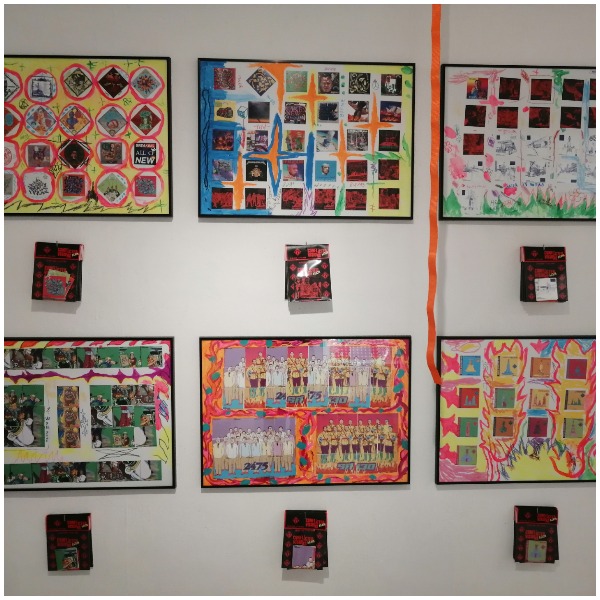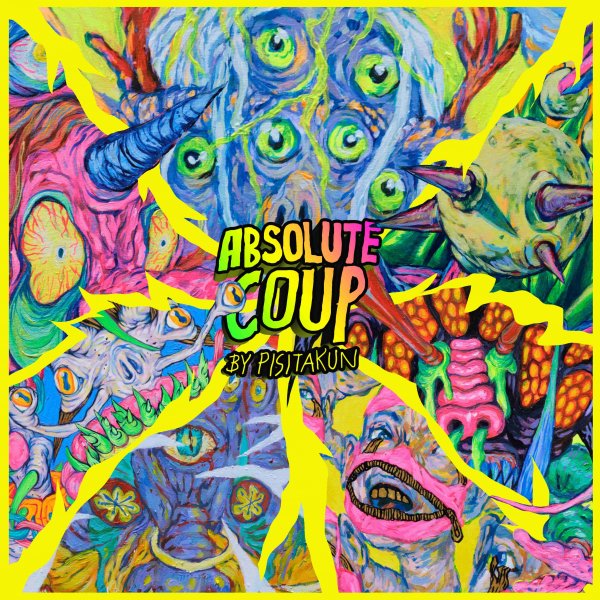Meet the artist releasing an album about Thailand’s tumultuous history
Protest songs.
Drawing on historical events, real life samples and synthetic sounds, politically-charged Thai visual artist and musician Pisitakun Kuantalaeng is gearing up to launch his third album, “Absolute C.O.U.P.”, on Jul 29. We caught up with him to discover what drives him to speak up in an era when free speech is stifled.

What inspired your new album?
Since the Siam Revolution in 1932, Thailand has had 13 coup d’etats. There are many systems that work together to [lead to this]. I try to talk about these groups: one song represents the army, one song represents the news or religion or the constitutional court. There are seven in total and three remixes from different artists.
How do you represent this in your music?
For each song, there is a timeline, which I call “the song, the voice, working, and dying.” If you listen to “ArArMyMy,” first you will hear the luk thung folk song about the poor soldier [“ทหารเกณฑ์คนจน” by Ekkaphot Wongnak]; for the voice, I used a [clip] from a speech by the leader of the the coup d’etat [in 2014], Prayut Chan-o-cha. For the working section, I used the sound of a grass cutter; this is because when the soldiers are [conscripted] to service at age 18 or 20, they are [made to work] like slaves, cutting the grass—we say the army is always “fighting with the grass and killing the ants.” Then for the dying part at the end, there are the names of the [conscripts] who have been killed in military camps—in Thailand, there are so many. It gives the song another layer.
What other samples do you use?
For one track, I use the song that you have to stand up for at the cinema… For the [song about] the people and religion, I try to mix some traditional sounds of the monks celebrating with music from different parts of Thailand—Isaan, the south, and the north [to represent struggle].

Are you scared to create music about such sensitive topics?
I think for music, it’s easy because I use samples from reality; I only piece things together to create a message.
Has your work ever got you in trouble?
For the music, not yet—but for my artwork, a lot! For me, art has a limit when you try to talk about the political situation; you get to the point but you can see exactly what is [being said], but for the music I try to make it really abstract, it’s more complicated. Music plays more with the brain. I feel like music controls your emotions, energy, movement, everything. When I make music, the concept is one layer and the sound is another layer.
Do you hope to create change through your work?
People can get the reason to protest from my music, but I hope that they can see how the music talks about the political situation... For me, the movement is not only about going to protest, or writing an article, or making something to critique the government, it is about fashion also—how the new generation talks about the problem. In Thailand, when you talk too much about politics, people think you are really angry or an activist. I try to show that we can do something more creative and talk to people globally also. Because, globally, the new generation loves politics, but they don’t want to listen to politics from the ‘70s.
How can activists keep the new generation engaged?
The new generation should know that they can express themselves in many ways, not only with writing. With music, you’re creating new things all the time and people can get new hope. For sure, finally we have to protest or do something to change things, but [until then] you have to keep people interested and create energy so that it feels fresh. When people get bored [of the government] and don’t want to do anything, this is not good, but when you create music or something, you feel proud and sometimes you can change [people’s] minds.
Do you think there is enough activism among young people in Thailand?
If you want to fight with the government, they have more power than you, so you have to be more creative than them. In the ‘60s or ‘70s, when you wanted to fight, you just protested or [formed a] mob or fought the government directly. Now, you cannot do that anymore, so you have to do something like a flashmob or create something on Twitter. You have a lot of media you can use now, and that’s why I think the new generation is getting more creative.

When you’re touring, do you explain the meaning of your music?
I just let people enjoy, I don’t explain… When I make music, I try to think about how I can relate with the people when I do the live set. That’s why I choose songs with techno, rave, or electronic music. I try to be really fun… For me, the movement of the people at the live sets, the freedom of the dance, it’s like a protest already. Sometimes people don’t want to listen to where the sounds are from, they just want the [feeling], but if someone wants to know about the meaning, they can come back to the song and try to research.
What artists inspire you?
My inspiration is mostly from old songs and their history; I use them to make new music. Isaan music has so much history; molam comes from the real traditional locals and it really relates to the political situation. That’s why I use so much molam and luk thung in my music; I try to mix in the history of the music, also—luk thung [country music] comes from the Cold War, while luk krung [city music] comes from the Siam Revolution in 1932, when everyone was trying to be civilized.
How do you make your music?
Sometimes I use Youtube samples, sometimes I write new ones with the same notes. I use an analog synthesizer.
How will the album be released?
On a gold bullet USB—I wanted to find something that represents the coup—and on tape. You will [also] get the seven stickers with the album [relating to each song]. It will also be available digitally and you can order from Bandcamp.
How does this work differ from your previous albums?
Before, I made music from my experiences. My first album, “Black Country”, is about the feeling of our country and what was happening [in 2014]. My second album is about when my dad passed away, it’s called “So Sleep”, it’s more emotional. This new album is more conceptual, about the concept of coup d’etat and how it [came to be].

Do you still make artwork?
Yes, actually I only started making music in 2015. I have a project called Iconoclastor. I have been making stickers every day about the situation in Thailand since February 25, the date after Future Forward [Party was banned]. [I also] talk about the military crackdown in 2010 and the people that died, because it has now been 10 years. All of my stickers are at WTF Gallery’s exhibition [through Aug 23].
What do you think has changed over those 10 years?
I think now the government is worse, but I feel like the new generation is really quite cool and active. It’s given me a lot of new hope compared to 10 years ago—it’s not only the party but the people.

Absolute C.O.U.P. is available to pre-order as a USB, tape or digital download via Chinabot
Advertisement